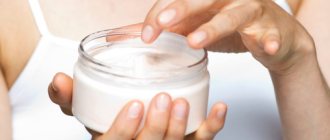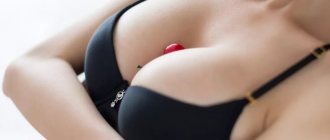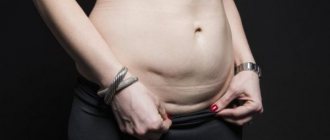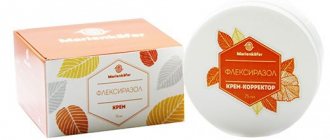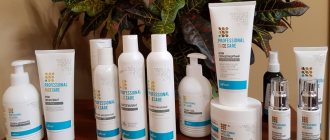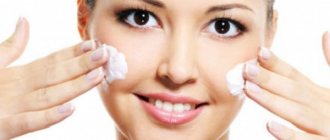Return to list of articles Natural leather, along with many advantages over artificial leather, has a significant drawback. Its porous, multilayer structure tends to lose some of its valuable properties over time or under the influence of negative factors, lose moisture, elasticity, become harder, rougher, and become covered with cracks. This leads to deterioration in appearance, inconvenience of wearing, and irreversible damage to leather products.
Various compounds for professional use and for home use help soften raw hides for subsequent processing, tailoring products, and extending service life. Manufacturers produce a wide range of such compositions of different types, effects, and intended purposes. The Tavro online store offers to buy professional products for softening natural leather in Moscow with delivery throughout Russia.
Causes of loss of softness
Often the material becomes rough, cracks, products warp, shoes rub calluses due to insufficient or lack of proper care. In addition to the main cause of coarsening, they also call:
- poor-quality tanning of hides;
- long exposure to the sun;
- changes in temperature, humidity;
- frequent contact with moisture;
- exposure to chemical reagents.
Taking good care of things will help prevent loss of elasticity. They need to be thoroughly dried after getting wet (1-2 days), cleaned of dust and dirt immediately, and not after some time, preventing absorption. It is advisable not to wear shoes every day, allowing them to “rest”. If these conditions are met, the use of emollients remains mandatory. They should be used while wearing things or during long-term storage.
Types of keratolytics
Heel softeners vary in the presence of active ingredients in the composition and can be:
- alkaline;
- acidic;
- with urea.
Let's take a closer look at each type.
Alkaline keratolytics
This is the most active softener that can easily cope with rough skin, old calluses, and corns on the feet. The alkali quickly dissolves the proteins and lipids that make up the epidermis, the surface of the skin becomes loose and dead particles can be easily removed with a pedicure file.
Alkaline keratolytics are quite active, so they should be used with caution and preference should be given to trusted manufacturers. Lotion for removing calluses and corns “Liquid Pedicure” from ARAVIA Professional is a product that quickly copes with foot problems, restoring the skin smoothness, softness and well-groomed appearance.
Acid keratolytics
Acid-based keratolytics
, as a rule, used for peeling.
- Fruit acid renews and moisturizes the skin.
- Salicylic acid has an antimicrobial effect.
- Dairy helps reduce the manifestations of hyperkeratosis.
But acids act only on the surface of the epidermis; they are not able to penetrate deeper layers and will not be able to cope with too rough skin.
Urea-based keratolytics
Products with urea
cause protein denaturation, that is, under the influence of the active substance, intercellular connections are broken and stretched. The stratum corneum of the epidermis softens greatly, but to remove it, you will have to make some effort by actively treating the skin with a file.
It is important to consider that when using a keratolytic with a high urea content (above 20%), the skin will quickly lose moisture and become very dry. Therefore, this product should only be applied to problem areas of the skin with severe roughness and it is better to entrust this to a professional.
Methods and means of softening
There are several ways to make your skin soft (in order of increasing cost):
- use proven “folk” methods, “life hacks”;
- apply professional creams, impregnations, emulsions designed for the care of leather items;
- Contact a dry cleaner or shoe repair shop.
Well-known methods of processing at home with homemade compounds based on glycerin, fats, oils or wax will be cheap. They give a good, but not predictable effect. In order not to accidentally spoil an expensive item, it is better to take a more expensive care product, specially designed for a specific type of leather product. In difficult cases, they turn to professional tanners who help soften, restore shape, and slightly stretch the shriveled, roughened product. This service, which is not the cheapest, completely eliminates the risk of damage to the product.
For softening, they most often use:
| Glycerol | The popular softening agent is not recommended by experts for frequent use due to its ability to reduce the strength of leather materials. |
| Vegetable oil | Sunflower, linseed, and other oils available to every housewife have a short-term effect, and the treated surface after them acquires an unattractive gloss. |
| Goose fat | Unlike oils, which cannot be absorbed without leaving a residue, goose fat is perfectly absorbed by the porous leather structure. It perfectly softens and protects against moisture penetration. The effectiveness of fat is confirmed by experienced housewives and experienced shoemakers. The only difficulty is getting the goose by rendering it from the fat deposits. |
| Castor oil | They do not require complex manipulations and are sold in every pharmacy. It is recognized as an effective, safe, inexpensive means of increasing elasticity, softness, and freshness. |
| Hand cream | In some cases, for example, to soften thin leather gloves, a simple hand care cream applied in a small amount with light massage movements helps. |
| Mastic based on wax, oils, etc. | Many craftsmen who work with hides have their own recipes for softening ointments. A popular remedy is a mixture of beeswax and castor oil. Turpentine, paraffin, and other “secret” ingredients are often added to it. |
| Shoe polish | Cream intended for shoe care is usually suitable for other products. You can make its effect more delicate by mixing it with simple baby cream in a 1:1 ratio. |
| Specialized cosmetics | The hardening problem is best solved with professional, highly purified, almost odorless chemicals. It is produced by almost all manufacturers of well-known branded leather products for any income. When using it, it is important to make sure that it is suitable for use on this type of skin and strictly follow the instructions. |
The greatest demand is for professional cosmetics intended for regular care of finished products. Produced under different brands, the formulations have different sets of components, which affects the results of use. The choice of one or another cream, spray, emulsion depends on the intensity of use of things.
Considering the factors that can cause roughening of the skin, it is necessary to use several types of formulations :
- for cleaning from dust and salt (foam, cream soap, emulsion for removing stains, salt stains);
- for protection against moisture, precipitation (water-repellent impregnations, waxes, sprays, usually for shoes, but suitable for other things);
- for softening, stretching long-stored, dry products (specialized chemicals intended strictly for a specific type of material).
The frequency of use is determined by seasonality and the intensity of use of things. It is enough to refresh outerwear (jackets, raincoats, coats) from time to time and treat them once in preparation for storage. Haberdashery that is constantly worn requires frequent moisturizing with special lotions, and shoes that are subject to frequent deformation need to be restored. Softening procedures are relevant for leather interiors of cars and furniture, where large surface areas are exposed to loads.
Recommendations for choosing softening agents
They choose cosmetics, focusing primarily on the type of leather:
| With a smooth front surface | For such things, there is a large selection of universal creams, waxes, impregnations, emulsions, sprays of various consistencies and purposes. They are a combination of ingredients that matt or make surfaces shiny, protect, and restore minor damage. |
| With pile | Velor, suede, nubuck with a less dense structure than smooth types need to be refreshed and softened with specially designed caring and cleansing compounds. Upon completion of all procedures, the pile must be carefully combed out with a special brush. |
| Varnish | Due to the presence of a coating of several layers of polymer, conventional products are not suitable in this case, as they leave marks on the mirror-smooth surface, destroy it and make it duller. You need to choose quick-acting sprays, rub them thoroughly, removing any residue. |
| Painted | In this case, it is advisable to choose a care composition of the same color as the leather material, or colorless. Before use, try on an inconspicuous place to ensure good results. |
| Exotic animals | It is preferable to use special cosmetics for the material of a particular animal. When using universal cosmetics, you must carefully read the instructions so that there are no contraindications for exotic materials. |
Old thick skin can easily withstand the prolonged action of a saturated oil-fat composition. When processing thinner, more delicate materials and products, you should not apply softening cream for a long time or allow the material to get wet through. In any case, it is imperative that the care product matches your skin type and follows the manufacturer’s recommendations for use.
I myself use regular hand cream. Sometimes I take baby cream, it is more oily. Absorbs perfectly and softens wonderfully.
That's basically all. You can tell a lot, but this is briefly for general information and application. I hope this article will be useful.
Criterias of choice
When choosing a foot cream, you need to take into account the concentration of urea. The effectiveness of the product and its purpose depend on its percentage.
- 1-10%. This concentration is found in moisturizing cosmetics. The cream gives the skin softness and prevents flaking.
- 10-20%. The cream is a light keratolytic. It is recommended for use in the presence of corns and hyperkeratosis.
- 20-50%. This is a strong keratolytic that is used in advanced cases. Independent use of such products is not recommended, as this can lead to burns and serious skin damage. Such creams should only be used by professionals.
Depending on the purpose, foot creams with urea are divided into moisturizing and nourishing:
- Nutritious. They contain various oils and are suitable for the care of very dry skin. With their help you can soften the epidermis and provide it with additional protection.
- Moisturizing. Urea is a component that, in combination with hyaluronic acid or aloe, provides an excellent moisturizing effect, eliminates dryness and prevents the appearance of cracks.
When choosing a cream, carefully study the composition. It is desirable that, in addition to urea, the composition includes the following components:
- Vitamins. Vitamin E prevents damage to the skin and eliminates dryness.
- Aloe, calendula extract, keratin. These components promote the healing of cracks.
- Oils: coconut, shea and others. They perfectly nourish the skin and maintain its PH.
- Propolis. It creates an invisible film that retains moisture and protects the skin from external influences.
- Betaine. It eliminates irritation and redness, softens the skin.
Carefully read the information on the cream packaging. Responsible manufacturers indicate the result of using the product: nutrition, hydration, healing of cracks. Also study the expiration date, manufacturing time, and the ability to cause allergies.
Features of wearing faux leather shoes
To ensure that the procedures carried out do not damage leatherette shoes, the peculiarities of their stretching should be taken into account.
- After using various products, you need to apply a special cream that will lubricate the surface.
- Cooling or heating is not suitable for items made of varnished or thin materials.
- If the shoe fits true to size, but its heel rubs your foot, there is no need to stretch the product completely. Simply rub the backdrop with dry laundry soap or a paraffin candle.
The best herbal creams for cracked heels
Herbal remedies are the main assistants in caring for sensitive, allergy-prone skin. The oils and plant extracts they contain will relieve dryness and remove cracks without causing irritation.
Allga San Repair Creme – pine cream
5.0
★★★★★
editorial assessment
92%
buyers recommend this product
See review▶
Allga San Repair Creme is a German product for the care of dry skin on the feet and the fight against cracks. The formula includes Allgäu pine oil with an anti-inflammatory and healing effect, allantoin, which promotes cell regeneration, and bisabolol, which relieves irritation and inflammation. It also contains turpentine oil, which has a deep wound-healing effect, beeswax, which creates a protective barrier on the surface of the skin, and the antioxidant vitamin E.
This composition allows the product to deeply nourish chapped skin, remove inflammation, and heal damage to the epidermis. The cream is produced in 90 ml laminate tubes with a flip-top cap. It reliably protects the drug from leakage and allows you to take it on the road. The narrow opening on the spout helps you accurately squeeze out the right amount of product.
Pros:
- natural composition;
- convenient packaging;
- pleasant herbal aroma;
- nourishes the skin;
- heals cracks.
Minuses:
- high price - about 500 rubles.
Allga San Repair Creme has a greasy, oily texture - walking barefoot until the cream is completely absorbed is extremely undesirable.
Kleona “Monastic Collection” – for rough skin of the feet
4.8
★★★★★
editorial assessment
90%
buyers recommend this product
See review▶
Monastic collection is a Russian cream that softens cracked heels. It is based on a complex of oils (shea, cocoa, onion, sea buckthorn, avocado), which provides nutrition and softening of dead skin. Small cracks heal in 2-3 days, deep cracks within a week.
The consistency of the cream resembles butter, the color is bright orange, and the smell is onion. Due to the absence of preservatives, its shelf life is quite short - 9 months in packaging or 3 months after opening. The cream is sold in a 75 ml round jar and is additionally protected by a foil membrane under the lid.
Pros:
- natural composition;
- economical;
- deeply nourishes and softens the skin;
- effectively treats cracks.
Minuses:
- specific aroma;
- expensive (about 400 rubles per jar);
- stains clothes and bedding.
The monastic collection leaves orange marks on things, but they can be easily washed without stain removers or aggressive detergents. But this is one of the few absolutely natural creams that heal heels.
Final rating table for foot creams
| Cream | Quality points | Points for value | Points for popularity | Total points |
| Gehwol Extra | 7 | 1 | 3 | 11 |
| EVO with urea 10% | 6,5 | 4 | 1 | 11,5 |
| Camille 60 Hydro-Creme | 8 | 3 | 1 | 12 |
| "Doctor" with urea | 8 | 4 | 1 | 13 |
| Milv with menthol and camphor | 9 | 4 | 1 | 14 |
| Domix with antibacterial effect | 9,5 | 3 | 2 | 14,5 |
| Topicrem for corns and calluses UR-10 | 9 | 3 | 3 | 15 |
| SOFIPROFI “Sea wave” | 10,5 | 3 | 2 | 15,5 |
| Farmona Nivelazione | 12 | 1 | 3 | 16 |
| ARAVIA Professional Medi Heal Cream | 9,5 | 3 | 4 | 16,5 |
With the modern rhythm of life, it is very important not to forget about proper self-care, because this allows you to maintain health and youth. Creams are an important component of daily procedures, so it is necessary to choose the most effective product. We have compiled a rating of the best foot creams, which includes the most effective products: among them you can choose something for yourself. Share your impressions and experiences, leave comments - feedback and your wishes are very important to us, because this is the only way we can become even better and prepare the most relevant materials for you!


